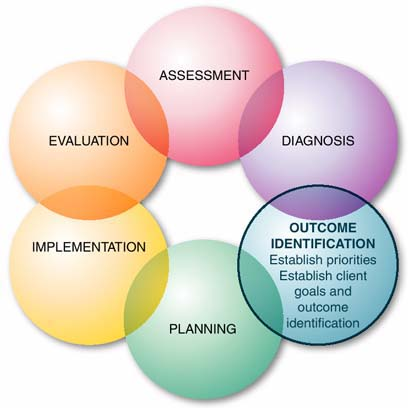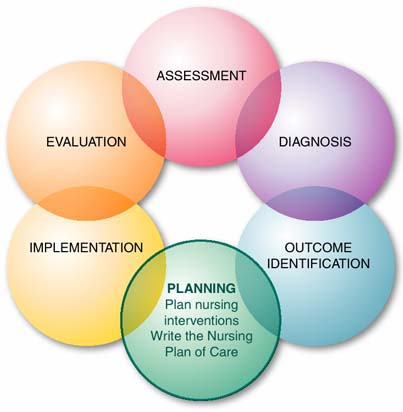Cards In This Set
| Front | Back |
|
Outcome Identification
|
The formulation of goals and measurable outcomes that provide the basis for evaluating nursing diagnoses. Outcome identification is the most recent addition to the nursing process, as described in the current American Nurses Association (ANA) Standards of Clinical Nursing Practice (2004). The ANA describes seven measurement criteria for outcome identification, which include specifying intermediate and long-term outcomes that focus on health promotion, health maintenance, or health restoration.
|
|
Outcome Identification
|
 Image: |
|
Outcome Criteria
|
specific, measurable, realistic statements of goal attainment. They may restate the goal, but they also present information that will guide the evaluation phase of the nursing process. To be specific and measurable, certain requirements must be met when writing outcome criteria.
|
|
Priority
|
A choice that comes first over other possible options. This choice is often based on urgency or importance. Priority setting is a decision-making process that ranks the order of nursing
|
|
Outcome: Client
|
An educated guess, made as a broad statement, about what the client's state will be after the nursing intervention is effected. It directly addresses the problem stated in the nursing diagnosis. Using clinical knowledge and experience, the nurse, in collaboration with the client, determines appropriate outcomes.
|
|
Planning
|
The fourth phase of the nursing process, refers to the development of nursing strategies designed to ameliorate client problems. A plan of care is developed to direct nursing care activities related to the person for whom the goals and outcome criteria were developed. A written plan of care directs the activities of the nursing staff in the provision of client care.
|
|
Planning
|
 Image: |
|
Activities During Planning Phase
|
|
|
Purpose of Planning Phase
|
|
|
Purpose of Outcome Identification
|
|
|
Activities during the Outcome Identification Phase
|
|
|
Nursing Intervention Classifications Domains
|
|
|
Nursing Interventions
|
“any treatment, based upon clinical judgment and knowledge, that a nurse performs to enhance patient/client outcomes” (McCloskey & Bulechek, 2004, p. xxiii). Alfaro-LeFevre (2006) states that nursing interventions are used to monitor health status; prevent, resolve, or control a problem; assist with activities of daily living (ADLs); or promote optimum health and independence. Interventions are written as specific activities on the plan of care
|
|
Types of Nursing Interventions
|
|
|
Guidlines for Client Care Plan
|
|



